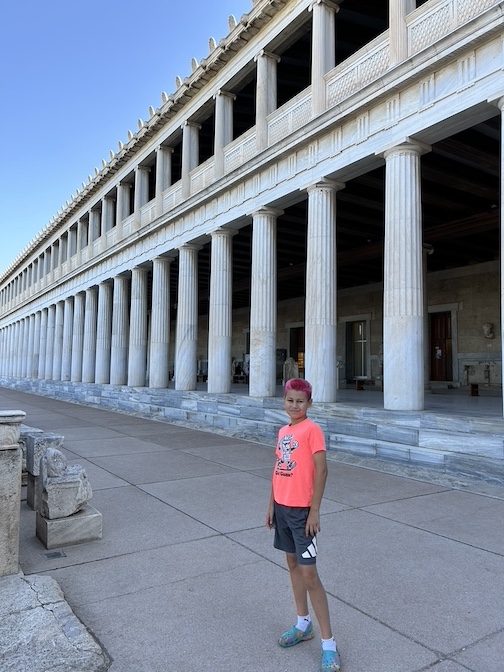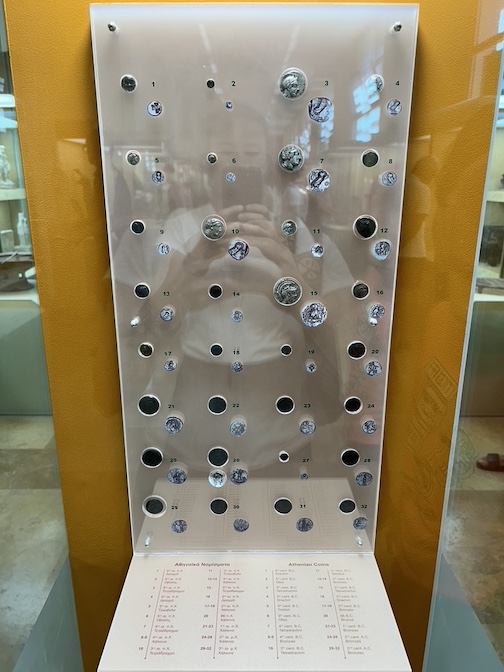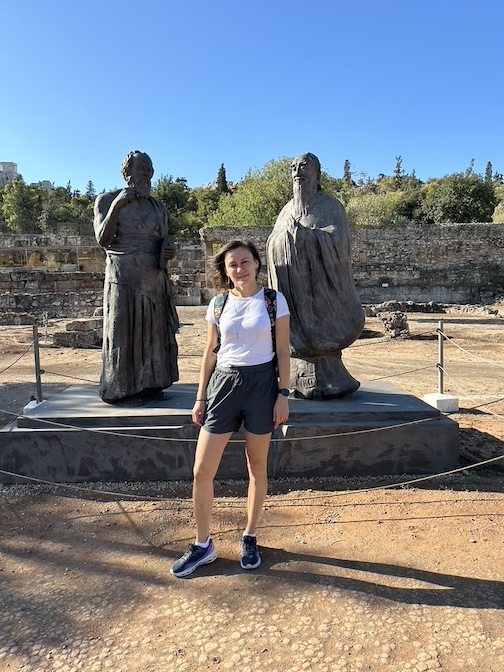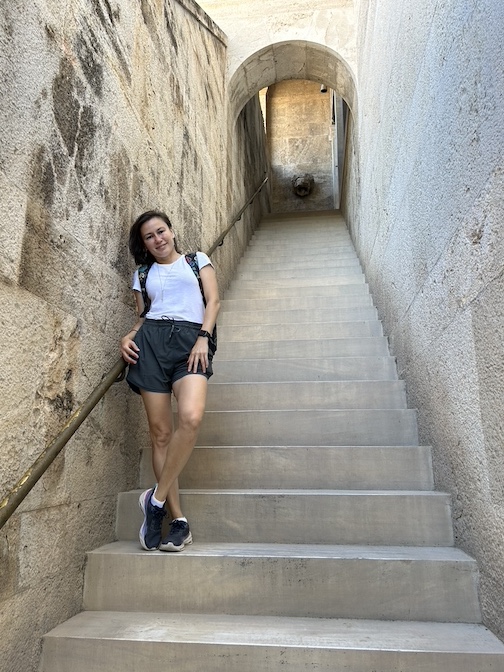Went to the Ancient Agora of Athens and its Museum early, tender hour of 8:30 am, and it was nice to experience the Agora without crowds.
- Located most of the important monuments: stoas, theater, temples, worship places, potential prison. Played a scavenger hunt of those as there wasn’t an audio guide, while the electronic guide was not the most conducive to exploration in the son. Took us some time to find Painted Stoa (Stoa Poikile – the ‘seat’ of Stoicism), where presumably the Apostle Paul debating philosophers, both Epicureans and Stoics.
- [I also generally have a feeling that the there is a high pushing for taking tour guides – whether group tours or private or otherwise. It’s a bit annoying. For a place like Agora, there definitely should have been a self-paced audio guide.]
- The museum was relatively small, at the back of the Stoa of Attalos, where originally ancient shops were located. They combined that space to create a museum. I accidentally eavesdropped on a group tour and was rewarded with two pieces of interesting info:
- There was a stand with ancient coins used in the region at the time and then drahma was tiiiiny, like the nail of my pinky! There is a parable in the Bible about a woman who lost her drahma/coin, and how she went to a great effort to find it: swept the whole house and when she found it, she brought over her neighbors to share the joy. I always wondered, how can one lose a coin in a very small dwelling to the extend that they had to do a major cleaning, and why would anyone even think to invite someone to share the joy. Well, after seeing how tiny the coin was, I understood. Also, fun fact, there was a tiny owl (symbol of Athens) printed on one of them.
- I was able to locate the fragment of mould-made clay lamp with the bust of St Paul in relief thanks to the same group.
- HP: Wanted to find connections of early Christianity and Ancient Greece – this happened!




